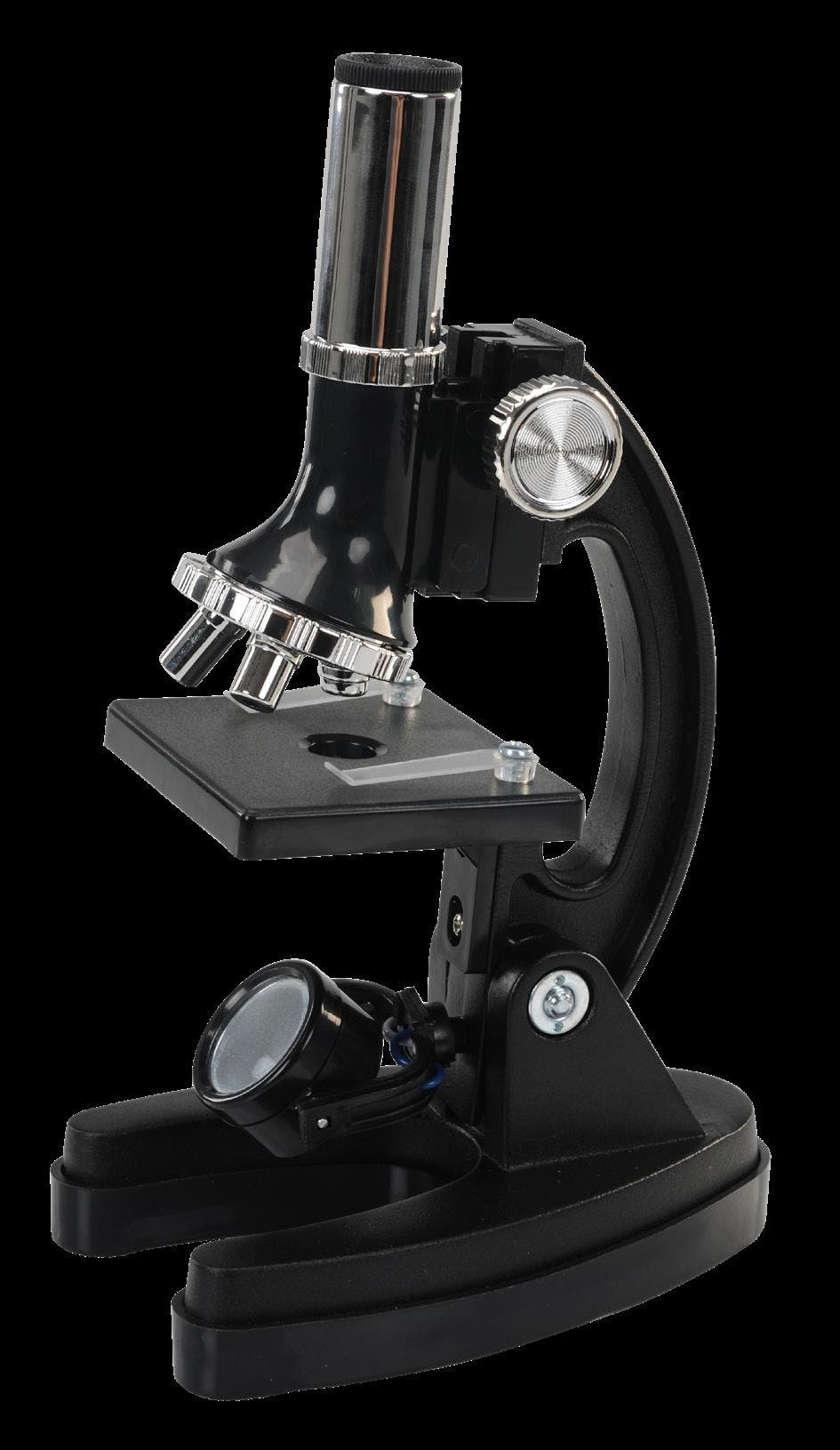
1 minute read
Objective lenses
from 5273 Guide
1. Eyepiece 2. Body tube 3. Focusing knobs 4. Rotating turret 5. Objective lenses 6. Arm 7. Stage 8. Slide clips 9. Mirror 10. Electric illuminator lamp 11. Base
1. Eyepiece
You’ll look into your microscope through the eyepiece, which is a small magnifying lens that collects the image projected up by the three objective lenses. Your microscope comes with two different eyepieces. The 10X eyepiece makes an image look 10 times larger. The 20X eyepiece makes an image look 20 times larger.
4. Rotating turret
The turret holds the three objective lenses. To change the lenses, rotate the turret slowly until each lens clicks into position.
5. Objective lenses
The objective lenses are the lenses closest to the objects you are examining. Your microscope has three objective lenses, each with a different magnifying power. The shortest lens has the lowest magnifying power (5X). The longest lens has the highest magnifying power (30X). The third lens has a magnifying power between the two (15X). The objective lenses work with the eyepieces to give your microscope a range of magnifications. With the 10X eyepiece in place, your microscope makes samples look 50 times (50X), 150 times (150X), and 300 times (300X) larger than they appear to your eyes. With the 20X eyepiece in place, your microscope makes samples look 100 times (100X), 300 times (300X), and 600 times (600X) larger than you can see them with your own eyes.
9. Mirror
The mirror aims light from a bright source, like a sunlit window or a table lamp, up through the slide you’re studying so you can see the specimen more clearly.
10. Illuminator lamp
When there is not enough light available for the mirror to do its job, turn the mirror over and the bright electric illuminator will automatically light your sample.




